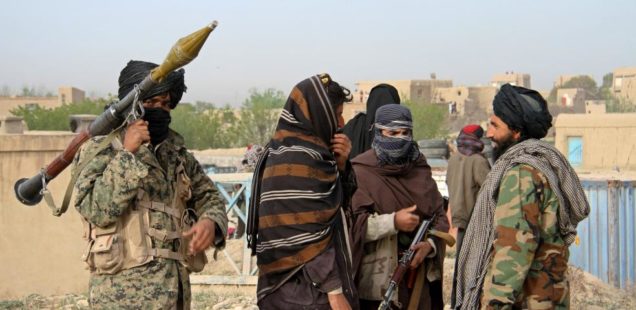
Trump’s Next Challenge: Russia Returns to Afghanistan
America’s 16-years in Afghanistan has so far resulted in 2,216 dead soldiers, 20,049 casualties, and an estimated $800 billion in direct war costs — not including veterans’ health and pension payments that could reach $400 billion before it’s all over. Add another $100 billion of USAID reconstruction costs, which is more than the cost of the Marshall Plan to rebuild western Europe, adjusted for inflation, and you’re well over a trillion dollars.
The Pentagon still has 8,400 troops in place, a figure Defense Secretary James Mattis may alter, which is why it’s especially troubling that Russia has decided to flex its territorial muscles and perhaps test the new Trump administration’s resolve.
Related: Gunmen Dressed as Medics Attack Military Hospital in Afghan Capital
Russia stayed well clear of Afghanistan once the Soviet army was forced to retreat in 1989 after a decade of war. Now it’s back, “keen to enter the scene in a big way,” says Michael Kugelman of the Woodrow Wilson International Center.
This is not good news for strategists in Washington. Russia’s now supplying military and economic assistance to the Kabul regime. It’s also attempting to broker peace talks between the government and the still-insurgent Taliban, and Kabul is listening.
What this means is very simple: Afghanistan’s turning into another competitive arena between Moscow and Washington.
Events have moved swiftly since the start of the year. Moscow is advancing the peace process it launched in December with a group that includes China and Pakistan, the latter a U.S. ally and one of Russia’s longtime adversaries.
Not to be missed, Russia is also bringing the Taliban into this process, as Zamir Kabulov, Moscow’s special envoy to Afghanistan, confirmed last month. That puts Russia directly at odds with U.S. strategy.
Related: Trump Speaks With Afghan Leader, U.S. Commander Calls for More Troops
When Rex Tillerson goes to Moscow next month, it’s safe to assume that Afghanistan will be added to his list that includes Ukraine and Syria. How will Tillerson handle this? Depending on how he plays it, Afghanistan could easily turn into one more reason President Trump’s idea of a new détente with Moscow won’t happen.
The U.S. has three current objectives: Defend the National Unity government in Kabul, fight the Islamic State, active in Afghanistan since 2014, and hold territory recaptured from the Taliban last year.
None of this is going especially well, which leaves the strategy vulnerable to challenge. The Kabul government is fractious, the Taliban plans to target provincial capitals in a spring offensive, and ISIS has expanded from its stronghold in the east of the country. Earlier this month it launched an attack against an Afghan military hospital in the capital.
Why is Russia suddenly so interested in Afghanistan? Its main concern is ISIS’ presence in a tenuously governed nation not far from its southern border. Militants from Uzbekistan, a former Soviet republic, are already fighting with ISIS in Afghanistan.
Related: Afghan Military Would Support More Foreign Troops, Official Says
The fear of ISIS is understandable. More worrisome in Washington and among U.S. military commanders is Moscow’s decision to work with the Taliban as an ally fighting the Islamic State.
Russia’s new design in Afghanistan marks a big reversal in a couple of ways. After the September 11, 2001, attacks, Vladimir Putin was the first world leader to telephone the Bush White House to offer assistance. He quickly granted the Pentagon overflight privileges as it launched its initial campaign in Afghanistan, which Putin supported.
In subsequent years, Russia gave Kabul modest amounts of aid, including military assistance, approved by the NATO–Russia Council. But that changed with the crisis in Ukraine—another theater of U.S.–Russian contention where the clock is still ticking. In Afghanistan, what was once cooperation now has a competitive edge.
There’s a larger reason Tillerson must discuss Afghanistan in Moscow next month. Russia and China are both laying the groundwork for a unified Eurasia to match the Atlantic alliance. It’s early days, but this is the biggest challenge to Washington’s global leadership now on the horizon.
Russia has its Eurasian Economic Union and China its “new silk road” and its Shanghai Cooperation Organization, which convenes China and the Central Asian republics. Afghanistan’s a piece of this picture. That’s why Beijing is on board as a key participant in the Moscow-sponsored peace process now getting under way.


You left off another objective of US interference in Afghanistan: Support and maintain the opium-poppy agriculture there – a *real* objective, in which the US has been rather more successful – so that the CIA isn’t deprived of one of it’s main sources of slush-fund money for its off-the-books, unconstitutional, criminal activities around the world. And that’s not to mention the income derived by the Western banks – mostly USAmerican – in laundering the earnings of the heroin dealers who handle the drug flowing out of Afghanistan – much of it in US military aircraft.